I’ve seen a few mining bees on one of my Euphorbia plants and on dandelions in the orchard recently, and am utterly thrilled about it. Here’s one of them below, the precious little darling. Isn’t she (I assume) simply stunning? And above, there’s a vid of an ashy mining bee enjoying one of the many dandelions in the orchard on 25 April, getting herself all covered with pollen.
This is part of the Euphorbia, aka Wood Spurge, in question. I planted it last year, and it’s growing like heck at the moment.
Mining bees are from the genus Andrena. They’re solitary bees, meaning that they have no queens and don’t live in colonies (though they do often live very close to each other). The majority of the 270-ish species of bee in Britain are solitary, yet they’re barely known and most people have never even heard of them, unlike the one kind of honeybee and two dozen kinds of bumblebee that we have and that are much more famous. Mining bees make their nests in soil, sometimes in flowerbeds in people’s gardens: they make little burrows in the soil, about 10 to 20cm deep, and will lay their eggs there. See here and here for more information about mining bees and their nests.
I don’t know where the bees I’ve seen have made their nests, but I’d be delighted if they’re in my orchard. By digging into soil for their nests, they aerate it, to the benefit of the soil itself plus any plants or other organisms living in it. As well as helping to improve soil, solitary bees are also brilliant pollinators. They are, therefore, fantastic and hugely beneficial insects to have around, and should be encouraged. In my orchard, they love the Euphorbia and dandelions, I’ve seen them on buttercups too, and apparently mining bees also go mad for the blossom of fruit trees, so I imagine they’re enjoying my apple trees at the moment as well (though almost all the blossom is too far from the ground for me to be able to see clearly if bees are on it).
The vid below is of the same mining bee in the first vid, just moments later on another dandelion nearby.
Mining bees are the same kind of shape as honeybees, but smaller, and have a very thin waist, a bit like a wasp. They’re so small that they’re easy to miss, but if you have a garden, it’s well worth looking out for them.
Sometimes when I see one from a distance, I think it’s a hoverfly at first, though there are a few things that give away to me what they actually are when I get closer: the long antennae, sometimes pollen baskets on their back legs, and the eyes on each side of their head.
By contrast, here’s a lovely hoverfly, and as you can see, the eyes are very different, plus they have much shorter and much less obvious antennae than bees do:
Here’s a tawny mining bee resting for a moment in a buttercup on 24 April after feeding on dandelions. How fabulous is that?
And another mining bee, resting on my skimmia on 22 April. Look at that lovely collection of pollen on her back left leg!
An ashy mining bee on my Euphorbia on 12 April. She was the first mining bee I saw this year, and I felt like cheering out loud at the sight of her.
Another pic of her because she’s just so gorgeous and special:
Another mining bee on a dandelion, 20 April:
Mining bees are tiny and very easy to miss or to mistake for a fly or a wasp from a distance, but they are unutterably precious. I am always so thrilled when I see them in the orchard, and so honoured to have them there. In my experience they simply adore dandelions, which is a very good reason to leave dandelions be and not rip them out of the ground as useless weeds! I have seen sooooo many honeybees, solitary bees and hoverflies on mine this spring (dandelions seem to be having a great year and are flowering all over the place; there are well over a hundred in the orchard, maybe several hundred).
Incidentally, the English word ‘dandelion’ derives from the French dent-de-lion, ‘lion’s tooth’, because the jagged edges of their leaves look like teeth. In German, the word for a dandelion is Löwenzahn (plural: Löwenzähne), which also means ‘lion’s tooth’, and in modern French they’re called pissenlit, meaning ‘wet the bed’, because they act as a diuretic.





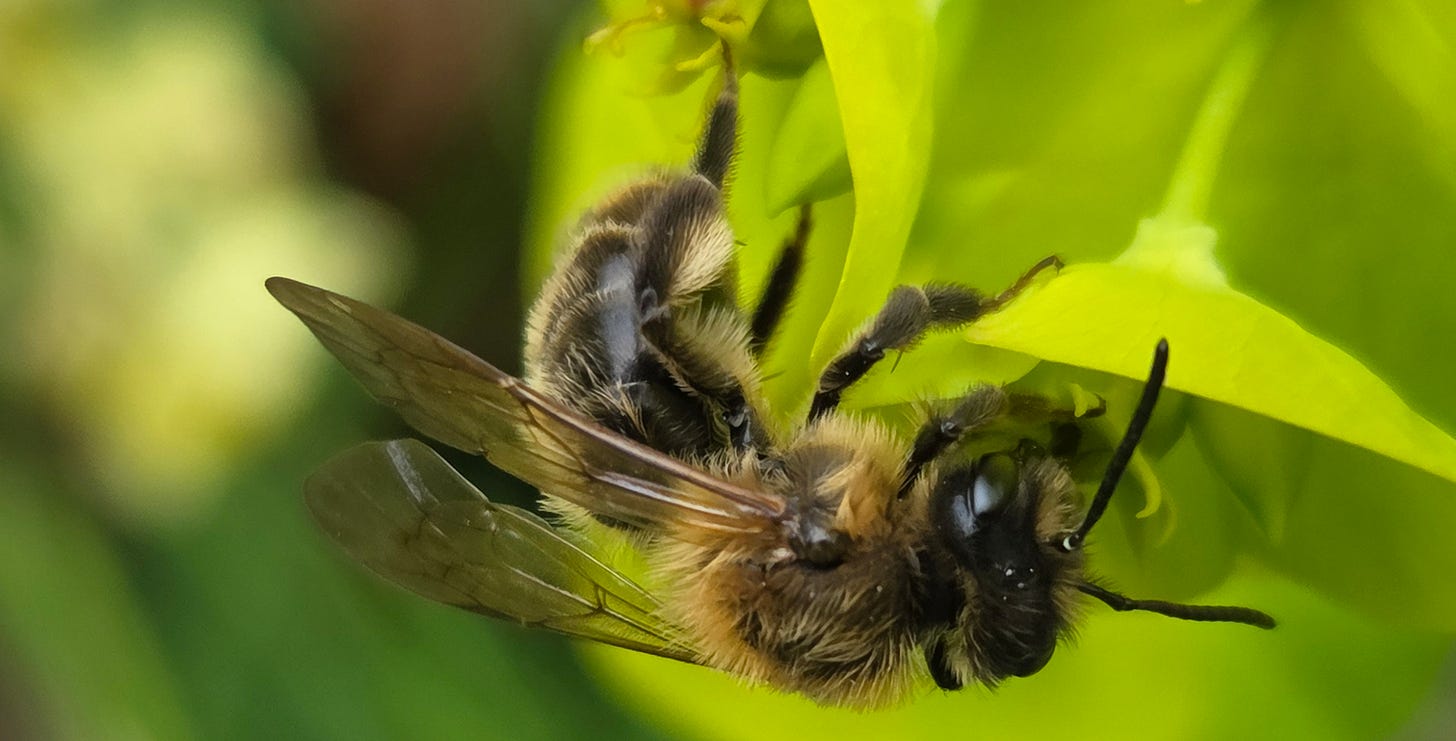









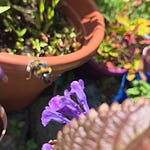

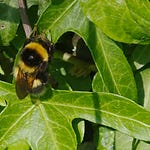
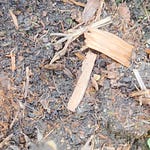
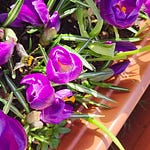


Share this post